Narrative Elements Teaching Resources
Are you teaching narrative elements and looking for worksheets and activities to get students excited about tone, narration, plot and a host of other elements to writing a great story? Wondering how to engage primary students on the concept of character traits and make plot development as exciting as recess?
The English teachers on the Teach Starter team have done just that with a collection of printable worksheets and digital activities built around this core reading standard. Aligned with the Australian English curriculum, each narrative elements activity in this collection has undergone a careful review by a member of our teacher team to ensure it's ready for your lesson plans and your students.
Explore our teacher team's guide to learn more about the various narrative elements and how to bring them to life in your classroom!
Is this your first year teaching about these story elements? Or the first year in a while? Our teacher team has put together a quick refresher to get you ready to rock and roll in the classroom, including a way to explain what narrative elements are.
What Are Narrative Elements? A Kid-Friendly Definition
First thing's first: Let's talk about the definition.
Narrative elements are the basic components of writing that the author uses to share the story with the reader. Without them, the narrative falls apart!
They are sometimes referred to as story elements or literary elements. No matter what you call them, these elements give a piece of writing structure and help the author convey information to the reader.
On the reading side, literary elements are also key to breaking down a story to understand better what the author is trying to say.
What Are Examples of Narrative Elements? 8 Examples That Can Help Your Students
There are eight main examples of narrative elements that students will encounter in narrative texts:
1. Setting
This element is crucial for developing a story as it provides the time in which the story takes place as well as where it takes place. Setting helps ground the story.
2. Plot
The plot is the way a story unfolds. It's essentially a pattern for the text.
3. Conflict
Conflict helps move a plot forward as it offers the reader a climax to move toward as they read.
4. Characterisation
This element of writing covers the way characters are developed within a story.
5. Point of View
Also called narration, this literary element is the perspective from which a story is told, such as first person or third person.
6. Tone
The tone of a story can be boiled down to the author's attitude about the subject of the story.
7. Genre
Genre covers the type of story written, such as realistic fiction, science fiction or even magical realism.
8. Figurative Language
Similes, metaphors and onomatopoeia are just some examples of the figurative language students may encounter in a text.
- Plus Plan
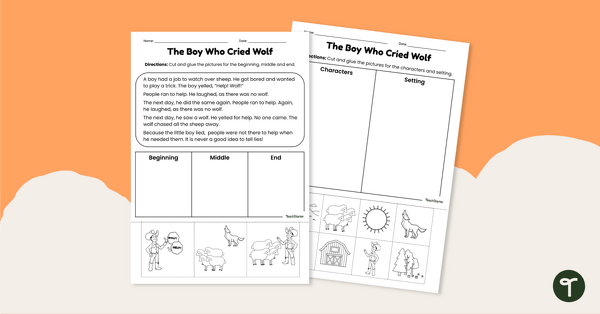
Story Elements Cut and Paste Worksheets – The Boy Who Cried Wolf
Explore story characters, settings and main events with this set of cut-and-paste worksheets based on a well-known fable.
- Plus Plan
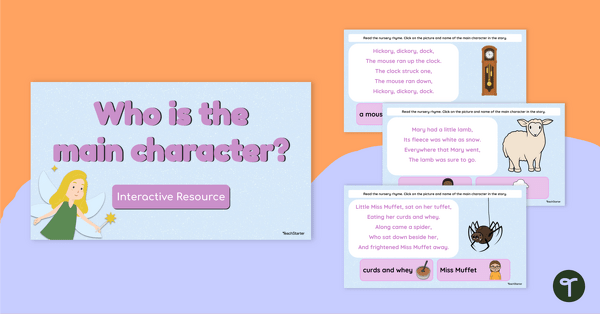
Who Is the Main Character? Interactive Game
Practise identifying the main characters in nursery rhymes with this interactive digital activity.
- Plus Plan
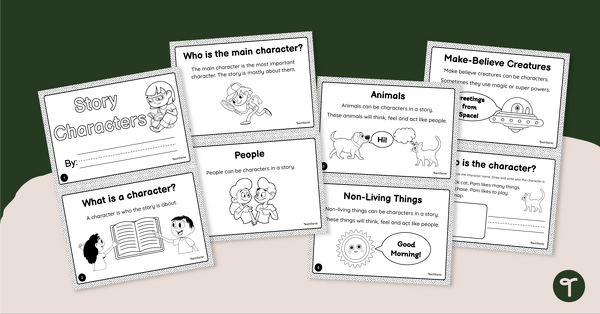
Story Characters - Mini Book
Teach your little learners about the various types of story characters with this fun-sized mini-book.
- Plus Plan
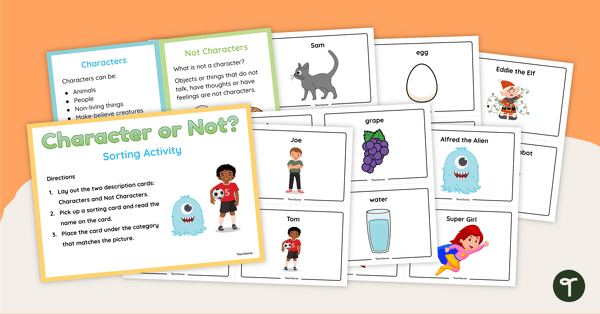
Character or Not? - Sorting Activity
Explore the difference between characters and non-characters with this hands-on sorting activity.
- Plus Plan
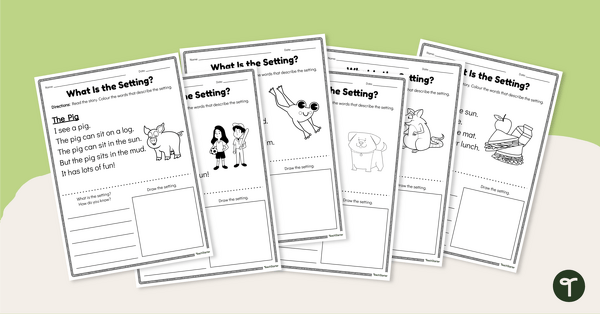
What Is the Setting? - Worksheets
Encourage your students to identify the setting in short and simple texts with this set of six worksheets.
- Plus Plan
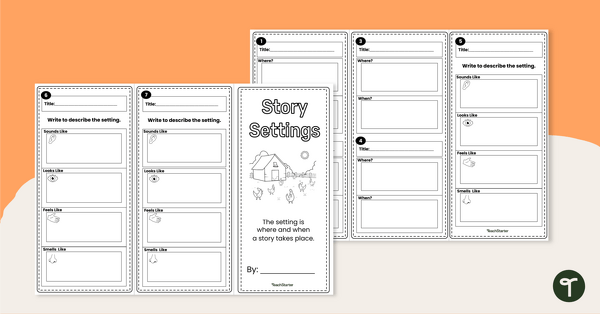
Story Settings - Brochure Template
Encourage your students to identify story settings in the books they read with this brochure template.
- Plus Plan
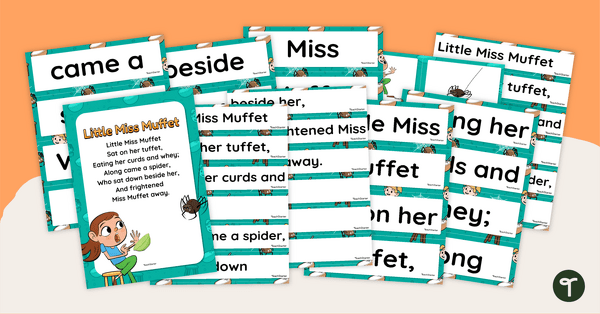
Little Miss Muffet - Sequencing Cards
Read and retell the story within the tale of Little Miss Muffet with a set of retelling sequencing cards.
- Plus Plan
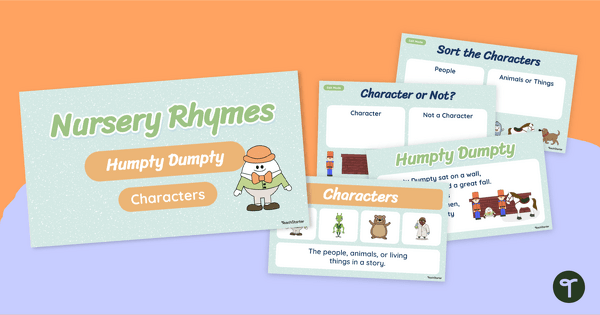
Narrative Characters Teaching Presentation - Humpty Dumpty
Engage young readers in texts and learn about characters with an instructional slide deck featuring the Humpty Dumpty rhyme.
- Plus Plan
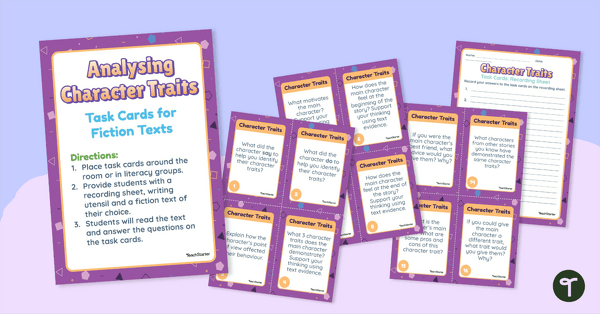
Character Analysis Task Cards
Use these task cards to practise analysing characters within any fictional text.
- Plus Plan
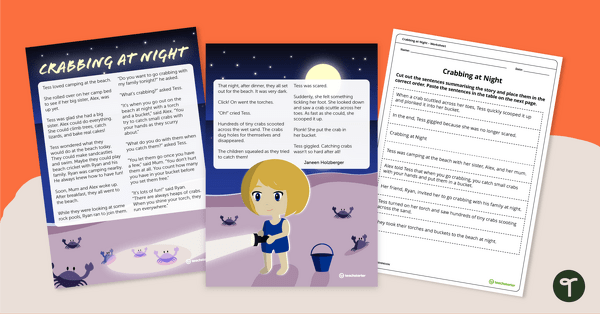
Crabbing at Night - Sequencing Worksheet
Identify the story beginning, series of events and ending with this narrative text sequencing activity.
- Plus Plan
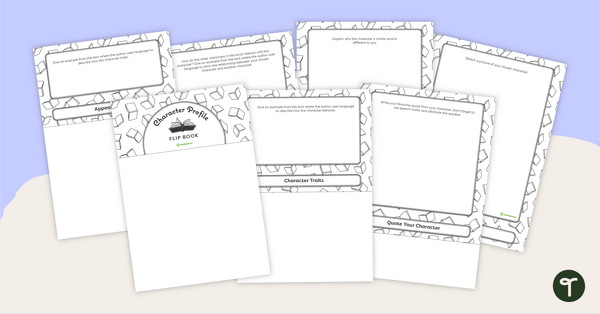
Character Profile Flip Book - Upper Primary
Explore how authors use language to describe characters with this versatile flipbook template.
- Plus Plan
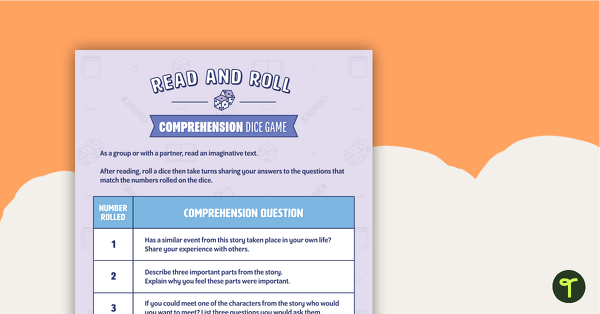
Read and Roll - Comprehension Dice Game
A fun reading comprehension strategy game to play in the classroom during literacy groups.
- Plus Plan
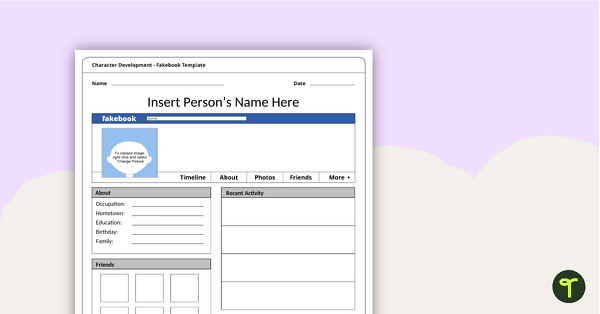
Character Development - Fakebook Page Template
Use research and creative writing skills to design a social media profile for fiction or nonfiction persons.
- Plus Plan
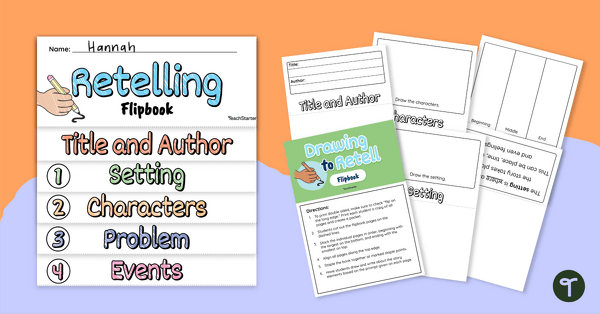
5 Finger Retelling Drawing Flipbook
Help your students understand the different aspects of a retell with this drawing to retell flipbook.
- Plus Plan
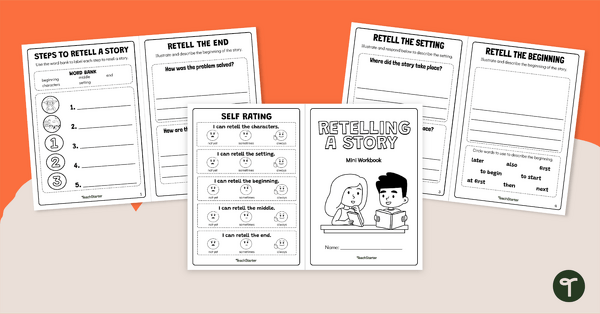
Retelling a Story Workbook
Help your students retain the elements of a retell with this printable retelling stories student workbook.
- Plus Plan
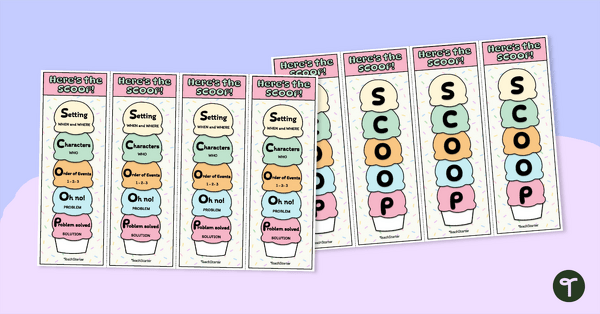
SCOOP Story Retell Bookmarks
Teach your students how to retell using the SCOOP acronym with these handy bookmarks.
- Plus Plan
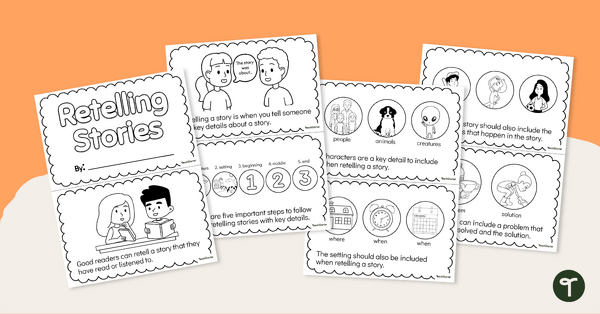
Retelling Stories Mini Book
Introduce how to retell a story using this easy to follow printable mini-book.
- Plus Plan
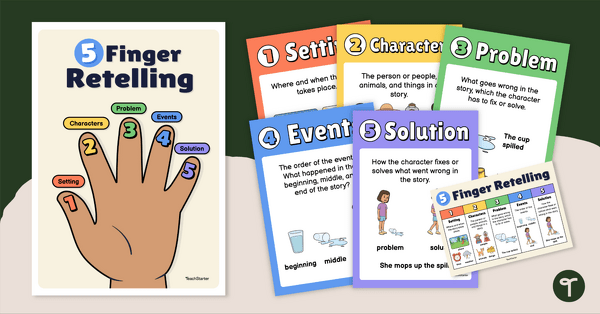
5 Finger Retell Classroom Posters
Guide students through the 5 finger retell process with this set of classroom posters and individual student guide.
- Plus Plan
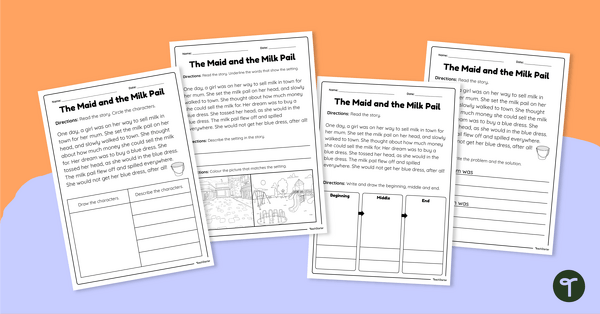
Story Elements Worksheets – The Maid and the Milk Pail
Practise identifying the story characters, settings and main events with this set of worksheets based on a traditional tale.
- Plus Plan
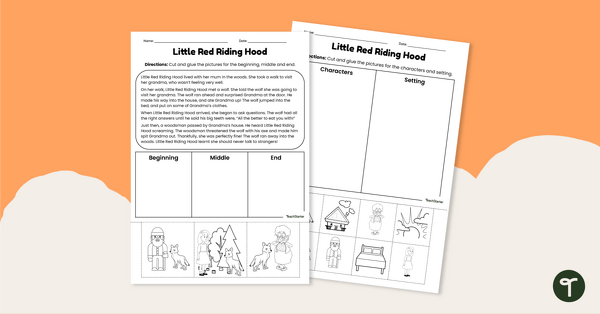
Story Elements Cut and Paste Worksheets – Little Red Riding Hood
Explore story characters, settings and main events with this set of cut-and-paste worksheets based on a well-known fairy tale.
- Plus Plan
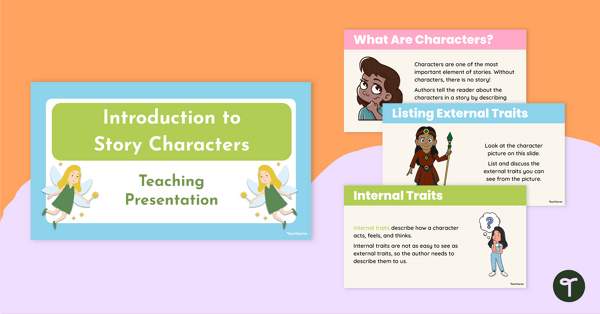
Introduction to Story Characters Teaching Slides
Introduce your students to the wonderful world of story characters with this visually appealing teaching presentation.
- Plus Plan
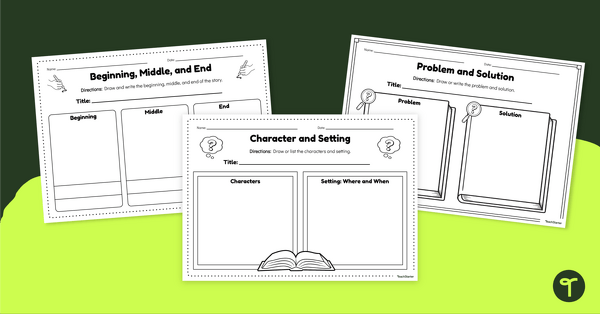
Narrative Elements Graphic Organisers – Landscape
Encourage your students to write and draw about various story elements with this set of differentiated graphic organisers.
- Plus Plan
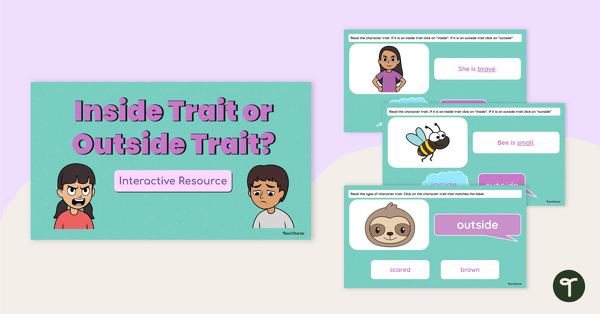
Inside Trait or Outside Trait? Interactive Game
Explore the internal and external traits of story characters with this interactive digital game.
- Plus Plan
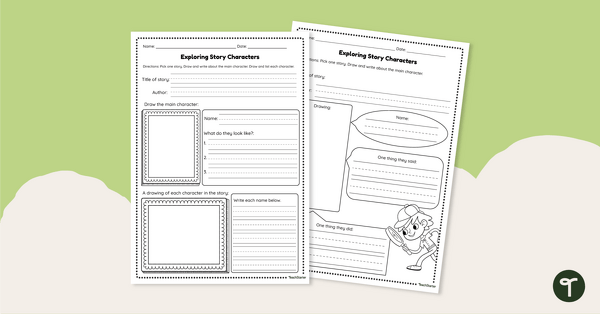
Exploring Story Characters - Worksheets
Explore the defining features of story characters with this differentiated worksheet.
- Plus Plan

Character or Not? - Interactive Activity
Explore the difference between characters and non-characters with this digital learning activity.
- Plus Plan
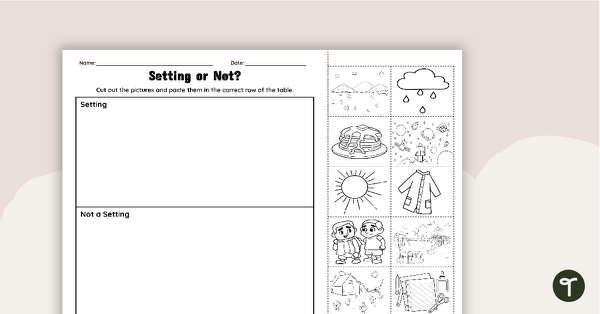
Story Setting or Not? Cut and Paste Worksheet
Explore the difference between story settings and non-settings with this cut-and-paste worksheet.
- Plus Plan
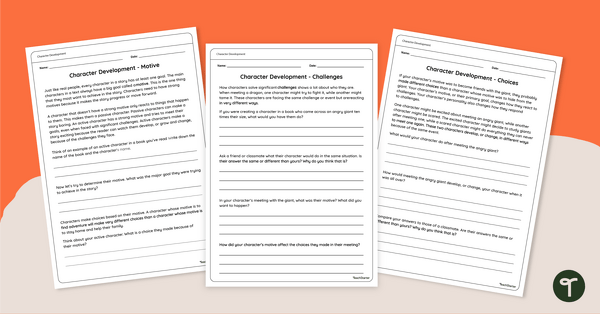
Character Development - Worksheet
Describe how characters in a story develop in response to major events and challenges with this 3-page character development worksheet.
- Plus Plan

Character Traits, Motivations, and Feelings - Worksheet
Analyse character traits, feelings and motivations with this two-page worksheet.
- Plus Plan
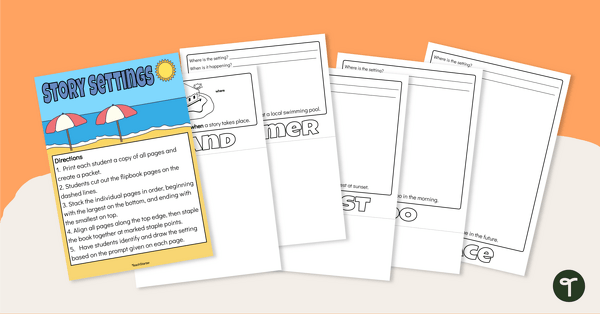
Story Settings - Flipbook
Teach your students about story settings with this hands-on flipbook.
- Plus Plan
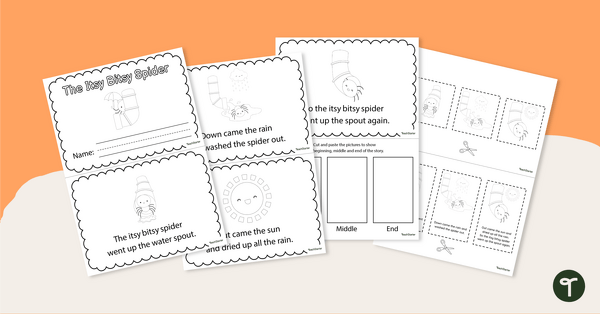
Beginning, Middle and End Mini-Book - Itsy Bitsy Spider
Teach your students about the beginning, middle and end of a story with mini-book retelling of The Itsy Bitsy Spider.
- Plus Plan
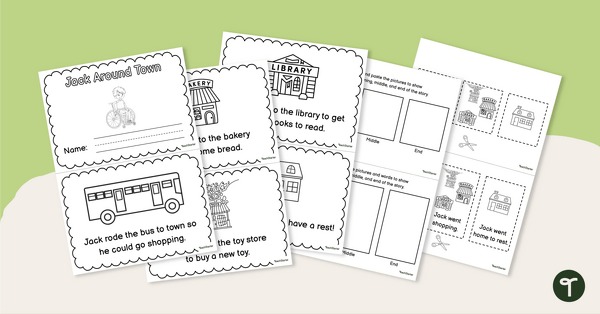
Beginning, Middle and End Mini-Book - Jack Around Town
Teach your students about the beginning, middle and end of a story with this narrative mini-book.
- Plus Plan
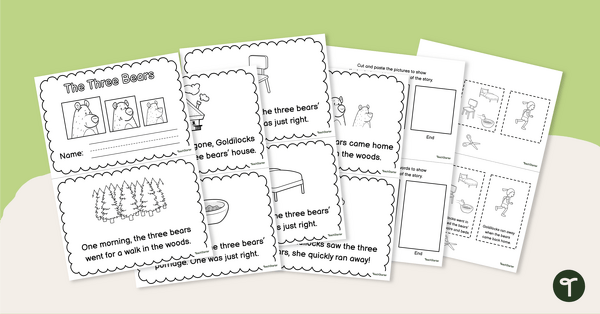
Beginning, Middle and End Mini-Book - The Three Bears
Teach your students about the beginning, middle and end of a story with this mini-book retell of The Three Bears.
- Narrative Elements Worksheets
- Narrative Elements Templates
- Narrative Elements Teaching Presentations
- Narrative Elements Games
- Narrative Elements for Foundation Year
- Narrative Elements for Year 1
- Narrative Elements for Year 2
- Narrative Elements for Year 3
- Narrative Elements for Year 4
- Narrative Elements for Year 5
- Narrative Elements for Year 6